This article was co-authored by Margareth Pierre-Louis, MD. Dr. Margareth Pierre-Louis is a board certified Dermatologist and Dermatopathologist, Physician Entrepreneur, and the Founder of Twin Cities Dermatology Center and Equation Skin Care in Minneapolis, Minnesota. Twin Cities Dermatology Center is a comprehensive dermatology clinic treating patients of all ages through clinical dermatology, cosmetic dermatology, and telemedicine. Equation Skin Care was created to provide the best in evidence-based, natural skin care products. Dr. Pierre-Louis earned a BS in Biology and an MBA from Duke University, an MD from the University of North Carolina at Chapel Hill, completed a residency in dermatology at the University of Minnesota, and completed a dermatopathology fellowship at Washington University in St Louis. Dr. Pierre-Louis is board certified in dermatology, cutaneous surgery, and dermatopathology by the American Boards of Dermatology and Pathology.
There are 9 references cited in this article, which can be found at the bottom of the page.
This article has been viewed 15,014 times.
Melanin is a pigment that’s responsible for your skin tone. Generally, having more melanin means that you have darker skin. If you want to reduce your melanin content, then you’re essentially lightening your skin. You have several options for this. The safest and most effective method is a laser treatment from a dermatologist. You can also try some approved skin creams to bleach the affected area. Always do this under the supervision of a dermatologist to experience the best results.
Steps
Undergoing a Laser Procedure
-
1Visit a dermatologist for a consultation about laser treatment. A targeted laser treatment is the most common and effective procedure to reduce melanin. It’s especially useful because a dermatologist can specifically focus on dark patches without bleaching all your skin. If you’d like this treatment, then contact a professional dermatologist for a consultation. The dermatologist will then bring you in to determine if you're a good candidate for laser treatment.[1]
- Dermatologists typically use lasers on people with dark patches or blotches on their skin. If you want to lighten larger areas, then they'll probably use a cream or peel instead.
- Only visit a licensed and certified dermatologist for a laser treatment. Some cosmetic clinics might offer the treatment, but they may not use the best techniques or equipment.
- Your insurance may or may not cover the treatment, so keep the cost in mind.
-
2Let the dermatologist test your skin to ensure a laser treatment is safe. Before the procedure, the dermatologist will probably do a test to make sure you aren’t overly sensitive to the laser. This involves focusing on a small patch of your skin for a short period of time. The dermatologist will then send you home to see if you have any reactions over the next few days, then schedule your laser treatment if all looks good.[2]
- Signs of a negative reaction include excessive redness, swelling, burning, and itching. Let your dermatologist know right away if you experience these side effects.
- If you do have a negative reaction to the laser, then your dermatologist can recommend other lightening techniques.
Advertisement -
3Undergo a 30-60-minute laser treatment. During the procedure, the dermatologist will give you eye protection to guard you from the laser. They’ll then rub a laser device onto the affected area, and possibly blow cool air onto your skin to prevent the laser from overheating you. The treatment lasts 30-60 minutes and you can go home after.[3]
- The treatment might feel a bit prickly or hot, but you shouldn’t feel pain. Let the dermatologist know right away if the treatment hurts you.
- If you’re having treatment on just a few spots, then the session will probably be shorter. If you’re treating a large area, then it will be longer.
-
4Return for repeat sessions if necessary. Whether or not you need more sessions depends on how large of an area you treated. Listen to your dermatologist’s instructions and schedule follow-up treatments if necessary.[4]
- The dermatologist will probably want to examine your skin in a week or 2 regardless to see how you’re healing.
-
5Wash the area with fragrance-free soap every day. Keeping the area clean helps prevent infections and complications. Wet it with clean, warm water and then gently rub some fragrance-free soap onto it. Rinse the area off and pat it dry with a towel.[5]
- The area will probably be sensitive for a few days, so don't scrub it hard or use a washcloth. This will be painful if the area isn't healed yet.
- Don’t pick at any scabs that form. This could cause a scar.
-
6Apply aloe vera gel or cream to soothe the area until it heals. You might have some minor burns or irritation after the procedure. You could soothe the area with aloe vera gel or cream to reduce burning and discomfort. Try applying it once or twice a day as needed. Make sure any crams you use are fragrance-free to avoid irritation.[6]
- Follow all of your dermatologist’s care instructions. If they tell you that putting any cream on the area isn’t safe, then listen to them.
- You could also use a cold compress to relieve the pain if the dermatologist says you can't use aloe cream.
-
7Protect the area with sunscreen for at least 6 months after the treatment. The area will be more sensitive to sunlight, since the melanin has been removed. Make sure you protect it for at least 6 months after the procedure. Apply sunscreen with at least 30 SPF whenever you go outside to avoid sunburns.[7]
- Even if it’s a cloudy day, apply sunscreen or carry it with you. You never know when the sun might come back out.
- If the spot is in an area you can cover with your clothes, then you don’t need sunscreen.
Using Skin-Lightening Products
-
1Use a chemical peel to remove surface melanin. If you want to lighten large patches of skin instead of a few spots, then your dermatologist may try a chemical peel to reduce melanin pigmentation. They will rub an acid agent onto your skin and let it sit for about 30 minutes. During this time, it dissolves the surface skin layers. Then, the dermatologist will wash the mask off.[8]
- Your dermatologist will probably use a light to medium-depth peel to start out with. In general, the lighter you want your skin, the deeper the peel has to be.[9]
- If you have sensitive skin, your dermatologist may not use a chemical peel. Placing acid on sensitive skin could cause a lot of irritation.
- You may need multiple chemical peels to remove excess melanin.
- Non-prescription and store-bought chemical peels are not recommended and could be harmful. Only have a chemical peel treatment under a dermatologist’s supervision.
-
2Visit your dermatologist for a microdermabrasion treatment. This treatment involves using fine crystals to sand away the top skin layers and reveal fresh skin underneath. This is usually used to remove scars, but could also lighten your skin. The dermatologist will numb your skin, then spend a few minutes grinding at the dark spot. After the treatment is finished, you'll be sent home to recover.[10]
- Your skin will be irritated and red for a few days after the treatment. Your dermatologist might tell you to take pain relievers and provide you with washing instructions to help you heal faster.
- Microdermabrasion is usually only used on small patches, so your dermatologist may use a cream or peel if you want a large area lightened.
-
3Ask your dermatologist for a prescription whitening cream. If you don’t want to have an in-office procedure, you could also get a prescription product to apply at home. Most of these creams contain retinoids or hydroquinone, both of which can lighten skin. Apply the cream onto your skin exactly as directed. In most cases, you’ll have to use prescription creams for about 3 months to complete the treatment.[11]
- The application instructions vary with different products, but in most cases you’ll apply the cream 1 or 2 times per day. Rub it in completely and then wash your hands thoroughly.
- Keep the cream away from your mouth or eyes.
- Don’t get the cream on anyone else, or it could bleach their skin.
- Those with darker skin tones should exercise caution if considering using a product that contains hydroquinone, as it can cause irreversible discoloration and skin darkening.[12]
-
4Apply an over-the-counter 2% hydroquinone cream. Hydroquinone is a common bleaching product that’s effective for lightening skin. Low concentrations are available from pharmacies without a prescription. Check the application instructions and apply the cream to the affected area exactly as directed.[13]
- OTC creams should produce results within 4 months. If you don’t notice any change, contact your dermatologist.
- Products with a hydroquinone concentration higher than 2% are usually not available without a prescription. This is because hydroquinone could cause health problems in high concentrations and with long-term use.
- Some countries have banned hydroquinone without a prescription or altogether because of potential health risks.[14] However, studies demonstrate that concentrations between 2-4% are not dangerous [15]
-
5Get a skin cream that contains kojic acid. This is another common ingredient that's used in many skin-lightening products.[16] This is because it can reduce the amount of melanin in your skin and prevent the formation of new melanin cells. Check the pharmacy or shop online for a kojic acid cream and apply it exactly as directed.[17]
- Kojic acid doesn't have the potential health risks of hydroquinone, so you can use it if your country has banned hydroquinone. The most common side effect is contact dermatitis.
- You could also ask your dermatologist for a prescription-strength kojic acid cream.
Expert Q&A
-
QuestionWhat are some alternatives to using hydroquinone if I would like to bleach my skin?
 Margareth Pierre-Louis, MDDr. Margareth Pierre-Louis is a board certified Dermatologist and Dermatopathologist, Physician Entrepreneur, and the Founder of Twin Cities Dermatology Center and Equation Skin Care in Minneapolis, Minnesota. Twin Cities Dermatology Center is a comprehensive dermatology clinic treating patients of all ages through clinical dermatology, cosmetic dermatology, and telemedicine. Equation Skin Care was created to provide the best in evidence-based, natural skin care products. Dr. Pierre-Louis earned a BS in Biology and an MBA from Duke University, an MD from the University of North Carolina at Chapel Hill, completed a residency in dermatology at the University of Minnesota, and completed a dermatopathology fellowship at Washington University in St Louis. Dr. Pierre-Louis is board certified in dermatology, cutaneous surgery, and dermatopathology by the American Boards of Dermatology and Pathology.
Margareth Pierre-Louis, MDDr. Margareth Pierre-Louis is a board certified Dermatologist and Dermatopathologist, Physician Entrepreneur, and the Founder of Twin Cities Dermatology Center and Equation Skin Care in Minneapolis, Minnesota. Twin Cities Dermatology Center is a comprehensive dermatology clinic treating patients of all ages through clinical dermatology, cosmetic dermatology, and telemedicine. Equation Skin Care was created to provide the best in evidence-based, natural skin care products. Dr. Pierre-Louis earned a BS in Biology and an MBA from Duke University, an MD from the University of North Carolina at Chapel Hill, completed a residency in dermatology at the University of Minnesota, and completed a dermatopathology fellowship at Washington University in St Louis. Dr. Pierre-Louis is board certified in dermatology, cutaneous surgery, and dermatopathology by the American Boards of Dermatology and Pathology.
Board Certified Dermatologist Some agents out there that do not seem to be harmful at this time include kojic acid, tranexamic acid, and ascorbic acid. Another alternative is azelaic acid, which is also a prescription medication.
Some agents out there that do not seem to be harmful at this time include kojic acid, tranexamic acid, and ascorbic acid. Another alternative is azelaic acid, which is also a prescription medication. -
QuestionIs hydroquinone harmful to the skin?
 Margareth Pierre-Louis, MDDr. Margareth Pierre-Louis is a board certified Dermatologist and Dermatopathologist, Physician Entrepreneur, and the Founder of Twin Cities Dermatology Center and Equation Skin Care in Minneapolis, Minnesota. Twin Cities Dermatology Center is a comprehensive dermatology clinic treating patients of all ages through clinical dermatology, cosmetic dermatology, and telemedicine. Equation Skin Care was created to provide the best in evidence-based, natural skin care products. Dr. Pierre-Louis earned a BS in Biology and an MBA from Duke University, an MD from the University of North Carolina at Chapel Hill, completed a residency in dermatology at the University of Minnesota, and completed a dermatopathology fellowship at Washington University in St Louis. Dr. Pierre-Louis is board certified in dermatology, cutaneous surgery, and dermatopathology by the American Boards of Dermatology and Pathology.
Margareth Pierre-Louis, MDDr. Margareth Pierre-Louis is a board certified Dermatologist and Dermatopathologist, Physician Entrepreneur, and the Founder of Twin Cities Dermatology Center and Equation Skin Care in Minneapolis, Minnesota. Twin Cities Dermatology Center is a comprehensive dermatology clinic treating patients of all ages through clinical dermatology, cosmetic dermatology, and telemedicine. Equation Skin Care was created to provide the best in evidence-based, natural skin care products. Dr. Pierre-Louis earned a BS in Biology and an MBA from Duke University, an MD from the University of North Carolina at Chapel Hill, completed a residency in dermatology at the University of Minnesota, and completed a dermatopathology fellowship at Washington University in St Louis. Dr. Pierre-Louis is board certified in dermatology, cutaneous surgery, and dermatopathology by the American Boards of Dermatology and Pathology.
Board Certified Dermatologist Hydroquinone may cause skin darkening and irreversible damage to darker skin tones. In some places, you have to have a prescription for it because it's not right for everyone.
Hydroquinone may cause skin darkening and irreversible damage to darker skin tones. In some places, you have to have a prescription for it because it's not right for everyone.
Warnings
- There are some home remedies for reducing melanin, like rubbing lemon juice on your skin. These treatments are not verified and could be dangerous.⧼thumbs_response⧽
- Never try to lighten your skin without speaking to a dermatologist first. You could cause serious harm if you use the wrong products or methods.⧼thumbs_response⧽
References
- ↑ https://www.nhs.uk/conditions/cosmetic-procedures/skin-lightening/
- ↑ https://www.mayoclinic.org/tests-procedures/laser-resurfacing/about/pac-20385114
- ↑ https://www.nhs.uk/conditions/cosmetic-procedures/skin-lightening/
- ↑ https://www.olivaclinic.com/blog/how-to-reduce-melanin-in-skin-permanently/
- ↑ https://www.nhs.uk/conditions/cosmetic-procedures/skin-lightening/
- ↑ https://www.nhs.uk/conditions/cosmetic-procedures/skin-lightening/
- ↑ https://www.nhs.uk/conditions/cosmetic-procedures/skin-lightening/
- ↑ https://www.olivaclinic.com/blog/how-to-reduce-melanin-in-skin-permanently/
- ↑ https://www.ncbi.nlm.nih.gov/pmc/articles/PMC2921757/
- ↑ https://www.mayoclinic.org/tests-procedures/dermabrasion/about/pac-20393764
- ↑ https://www.nhs.uk/conditions/cosmetic-procedures/skin-lightening/
- ↑ Margareth Pierre-Louis, MD. Board Certified Dermatologist. Expert Interview.15 May 2020.
- ↑ https://www.aocd.org/page/Hydroquinone
- ↑ Margareth Pierre-Louis, MD. Board Certified Dermatologist. Expert Interview.15 May 2020.
- ↑ https://www.asds.net/Portals/0/PDF/asdsa/asdsa-position-statement-hydroquinone.pdf
- ↑ Margareth Pierre-Louis, MD. Board Certified Dermatologist. Expert Interview.15 May 2020.
- ↑ https://www.sciencedirect.com/science/article/pii/S0753332218367477
- ↑ Margareth Pierre-Louis, MD. Board Certified Dermatologist. Expert Interview.15 May 2020.

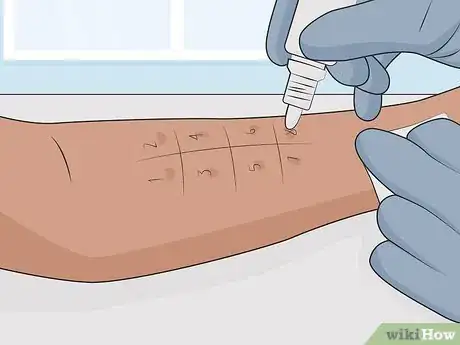
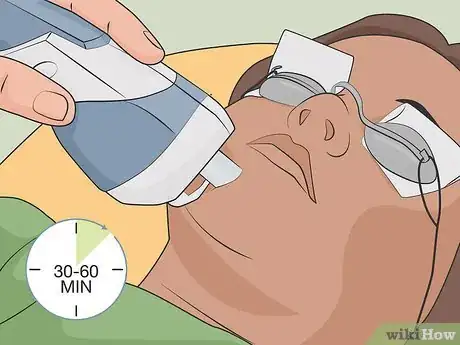
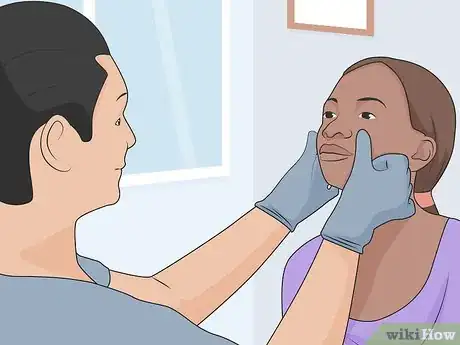
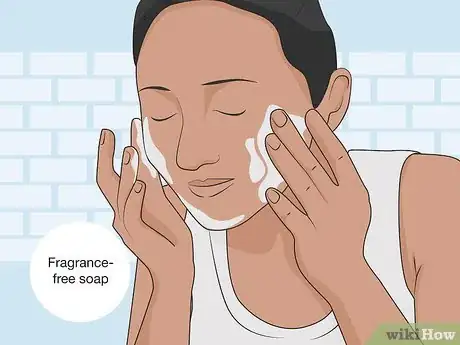
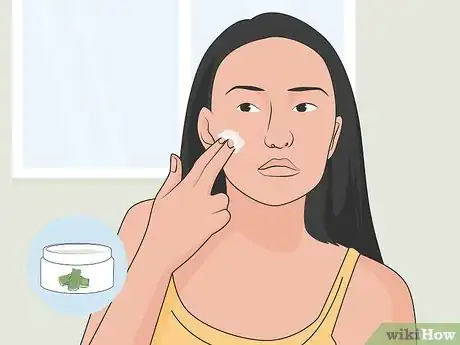

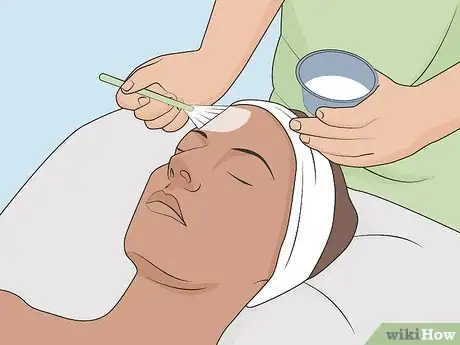
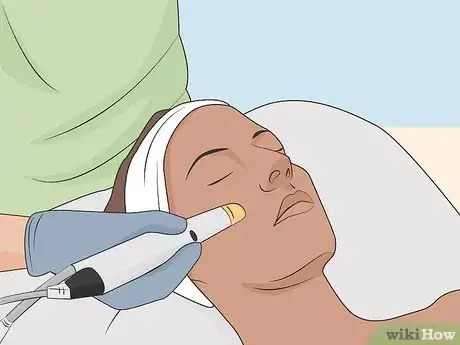
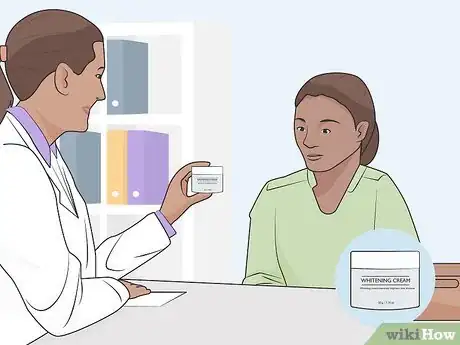

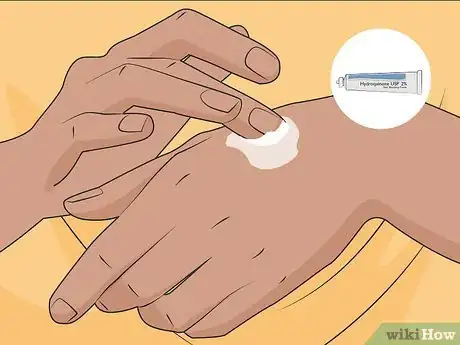
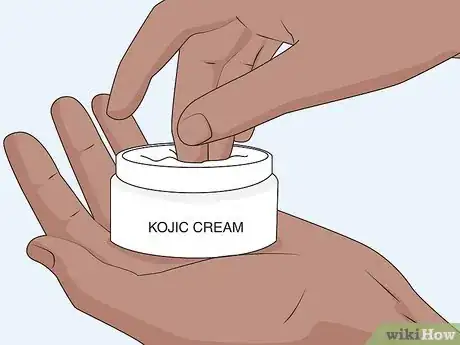

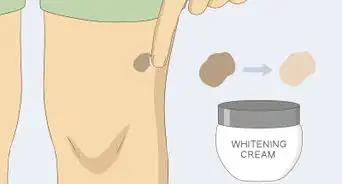
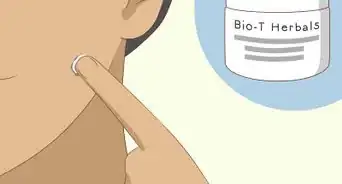

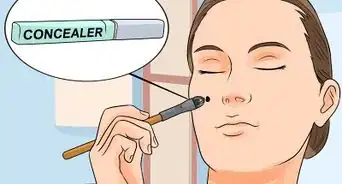
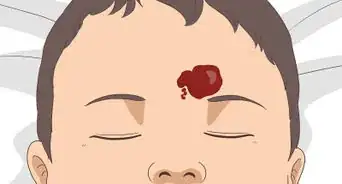
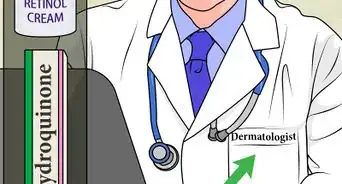

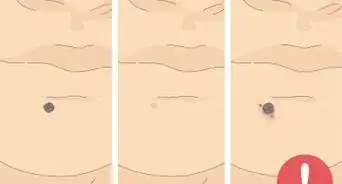



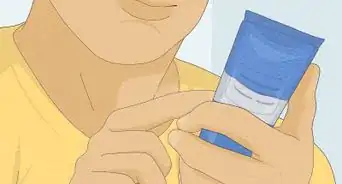













































Medical Disclaimer
The content of this article is not intended to be a substitute for professional medical advice, examination, diagnosis, or treatment. You should always contact your doctor or other qualified healthcare professional before starting, changing, or stopping any kind of health treatment.
Read More...